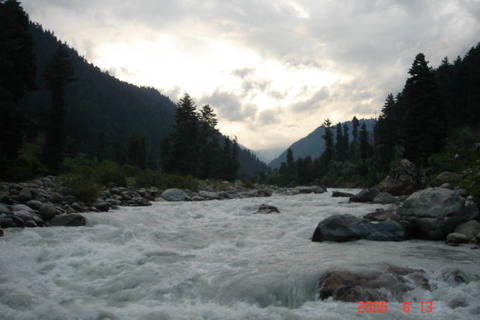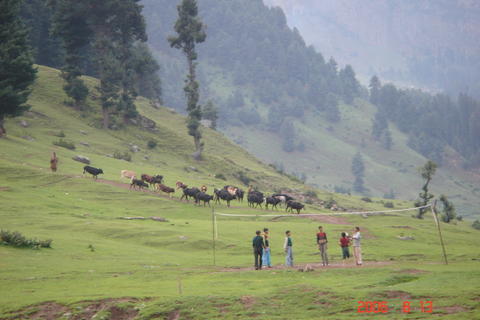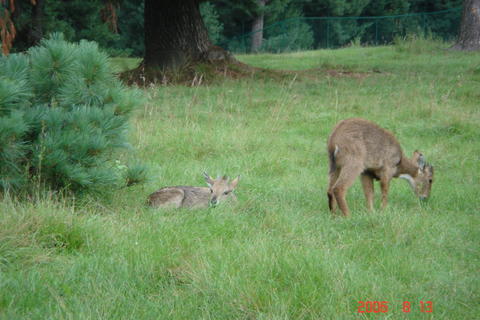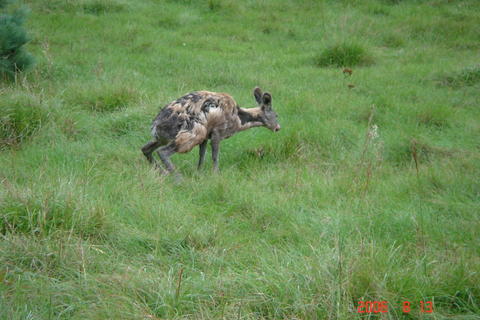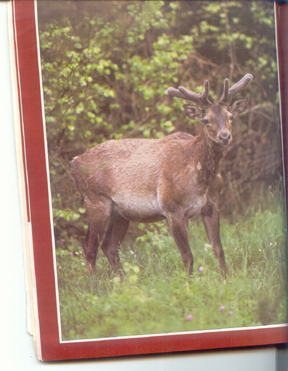

 Conservation films
Conservation films India offers a showcase for wildlife second only to Africa. India and Nepal are two countries of the world blessed with incredible eco systems and bio- diversity.
IndianWildlifeClub.com has produced a number of documentary films on wildlife, nature and our cultural heritage under the banner "Wildbytes.tv". Some of these films have been given 'educational' category certification by the Censor Board and have also been exhibited and acclaimed in international documentary film festivals. IndianWildlifeClub.com is also empanelled with the Directorate of Adult Education for relevant program production. Our films are being telecast by Gyandarshan, the educational channel of IGNOU.
India International Centre, New Delhi, India Habitat Center, New Delhi, Siri Fort Auditorium, New Delhi, Nehru Centre, Mumbai, Y.B Chavan Auditorium, Mumbai and Sofia College Auditorium, Mumbai are some of the halls where the films have been screened over the last five years.
These films are
Sarang The Peacock- 23 minutes
About The Flim
This is a video presented at two levels. It is a film on the Indian peafowl shorn of legend , folklore and mythology- a film on the live bird. It is also a film which visualizes two prominent Hindustani raagas' Sarang' and 'Megh'.
'Sarang' in Hindi, is a word which has multiple meanings, one of which is the peacock. Some of the other meanings given in the dictionary are, sun, clouds, frogs, snakes etc. All these form an integral part of the natural habitat of the peacock and form the backdrop for the pea fowls featured in the film.
The peacock is a fine example of much that is Indian in idiom, music and rhythm.
The film is a sensitive portrayal of the bird's relationship with nature, its habitat, and its interface with the earthy village landscape.
It is also a tribute to the music it lives and dances to, be it the classical ragas or the clouds and the rain.
The peacock was declared India's National Bird in 1963 but few, if any, films have been devoted entirely to this magnificent bird.
This 22 minute documentary examines the Indian peafowl from hatching to adulthood through a story told by the camera. Peafowls are found in abundance in large green stretches in many parts of Northern India. The film is the result of observing and photographing pea fowls in their natural habitat for a period of over one and a half years. Location shooting was done in the Deer Park and Tuglakabad Fort areas of New Delhi.
Where do peahen incubate her eggs?
What colours are there on a peachick?
Do peahens eat snakes?
See what the camera has to tell.
'Sarang' is also a Hindustani raag. 'Vrindavani Sarang' is visualized in the courtship dance of the peacock in the film. The soulful rendering on the violin was composed by Joi Srivastava who also uses 'Megh' raag to visualize the rainy season.
Visualzing Hindustani raagas through paintings was a tradition in India in the 17th and 18th century. The miniature painting schools of Pahari, Kangra, etc. specialized in 'Ragmala Paintings'. Peacock figures appeared in many of these paintings accompanying a woman, lovely in herself, but restless with longing. Peacock is used as a symbol of the absent lover. The flowing rhythmical lines and simple unaffected naturalism of these paintings are highlighted as a finale to the film.
VHS(PAL) cassettes and VCDs of the short film are being marketed by excelhomevidoes and are available in leading stores in India.
View a 2.5 minute long trailer of this film at
http://www.youtube.com/watch?v=_PUR5tTqNWETo purchase the film online go to
http://www.wildscapes.net/vcd_sarang.aspx To Corbett With Love 24 minutesAbout The Film
Corbett National Park nestles in the foothills of the Himalayas. It is the first national park of the Indian sub-continent and was the launching pad for the region's ambitious conservation plan called Project Tiger in 1974.
This 24 minute video was exclusively shot in Corbett Park and portrays the park from the viewpoint of a tourist. Corbett's magnificent forests with their rich flora and fauna attract some 48,000 tourists annually, many returning year after year for sightings of tigers, elephants, deer, ghariyals etc. and some 500 odd species of birds. The film looks at the conversion of Jim Corbett, the Nainital- born Britisher who founded the National Park, from hunter to protector of wildlife.
The park's employees - rangers, forest guards and mahouts face threats from wild animals and poachers. In the film you can meet Subedar Ali, the mahout who survived a tiger attack, spent a year in hospital and then came back to work in Corbett Park as a mahout, taking photographers and tourists for jungle trips.
The film is a tribute to the silent protectors of the tiger. It has been motivated by the belief that the Indian tiger has a better chance of survival when it is worth more alive than dead. Each tourist to the Park who has been lucky to sight a tiger goes back with unforgettable memories. Even those who don't manage seeing a tiger cannot but wonder at the Park's ambience, where elephants, deer and others are sure to make eye contact with you.
The film makes a subtle statement about saving the tiger through Subedar Ali; not in so many words as from the obvious passion this mahout has for wildlife.
VHS(PAL) cassettes and VCDs of the short film are being marketed by excelhomevidoes and are available in leading stores in India.
Watch a trailer 2.25 minutes at the link
http://www.youtube.com/watch?v=syUOevDzIx4Buy this film at
http://www.wildscapes.net/vcd_corbett.aspxWilderness Nepal 25 minutesAbout the Film
The film looks at the wilderness of the Himalayan region with special reference to Nepal. Nepal fosters an incredible variety of eco systems and is a hotspot of bio diversity.
Exclusive footage of the Indian Rhino and the Asian elephant from the Royal Chitwan National Park, which is guarded by the Royal Nepal army from rhino poachers. While depicting the natural beauty of Nepal, the film also projects the 'community forests' concept in Nepal which has proved a success in maintaining the wetland area of "twenty thousand lakes", a paradise for bird watchers.
The concerns facing wildlife protection are projected in the overall role it plays in the ecology of the entire area. The evolution and extinction of species is looked at in the backdrop of the spectacular natural history event by which the Himalayan mountains were formed sixty million years ago. Digital animation techniques have helped visualize the event.
Unchecked mining in the forested hills causes floods during monsoon and water shortages during the dry season. Decrease in primary and secondary forest area is posing a question mark on the future of the Bengal tiger and in particular the Asian elephant in Nepal.
The film is available for telecast in beta-SP /digital format.
View a 2.5 minute long trailer of this film at
http://www.youtube.com/watch?v=uvRbbHzS4bITo purchase the film online go to
http://www.wildscapes.net/vcd_nepal.aspx Seoul-Where Modernity bows to Tradition 22 minutes The film is a travelogue on Seoul, the capital city of the Republic of Korea. The film is a study of the synthesis of the modern and the traditional that S.Korea has achieved. It depicts the natural beauty of Korea in the backdrop of its violent and tumultuous history. S. Korea comes through as a Society which is truly at peace with its tradition, culture and modernity. The film also brings out parallels between India and Korea, two ancient countries striving to set a high pace of development.
The film depicts Korea through the ages and has footage on
-- National Museum and Folk Village
-- Bukansan National Park
-- Royal Palaces
-- Incheon Port
-- Modern Seoul City
The film is available in Beta-SP for telecast.
The film is being telecast by Indira Gandhi National Open University in their channel "Gyandarshan". The film has been accepted by Cathay Pacific Airlines for in flight entertainment. The Korean Embassy in New Delhi is screening it for the students of Korean Language from Delhi University and Jawaharlal Nehru University at special screenings in the Embassy.
View a 2.5 minute long trailer of this film at
http://www.youtube.com/watch?v=B8QKmmpI92YTo purchase the film online go to
http://www.wildscapes.net/vcd_seoul.aspx Living with the Park-Ranthambore 25 minutesAbout The Flim
Ranthambore National Park, Rajasthan is perhaps the most popular tourist destination to watch tigers in the wild. But despite the tourist dollars, the Park’s main attraction, the Bengal Tiger is in danger of getting decimated here, as it has already happened in Sariska. Is it time we looked outside the park for the reasons, at the humanity which is living outside, their lives still connected to the Park- the people who are living with the Park?
This short film from WildBytes.tv, is a look at the popular tiger reserve as an integrated universe comprising its animals and people in the adjoining areas. The forest connects the two and neither one can flourish without the other. So is the policy of segregating the park as a preserve for animals alienating the people who lived in harmony with the park for decades, helping the Park? There are no quick answers. The camera shows people around the Park voicing their pride in and reservations about the Park. Is the Park management listening? For in the interest of preservation it seems foolish to ignore the distilled wisdom of people whose lives are in tune with nature.
The questions the film raises are:
1) Can we integrate life outside the Park with efforts at preservation?
2) Do the people living around the Park have a stake in protecting the Park and its animals?
3) Given a stake in the health of the park, a role in running it, will they develop a sense of pride and protect the animals inside?
4) Can conservationists help people living with the Park, see the linkage of the Park with their own well-being?
5) Will these people who have lived in harmony with the Park for many years, then develop a stake and pride in the Park and its animals?
View a 2.5 minute long trailer of this film at
http://www.youtube.com/watch?v=fQ9QxZ7hS5UTo purchase the film online go to
http://www.wildscapes.net/vcd_livingpark.aspx






